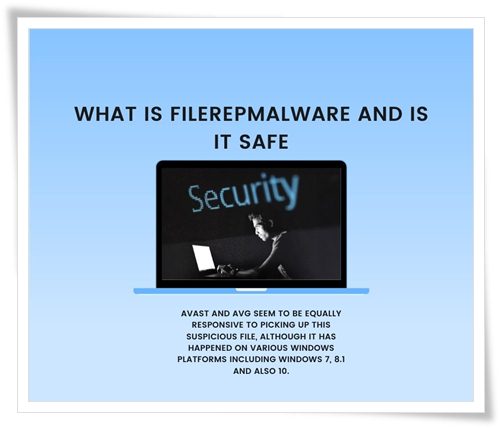Several users have contacted us with concerns after their third Event Antivirus detected a dubious document called FileRepMalware. 2 third-party antivirus suites are known to find this possible protection risk – AVG and Avast. The issue doesn’t appear to be related to a specific Windows variant, as it has been proven to occur on Windows 7, Windows 8.1 and Windows 10.
If you’re using Avast Antispyware, you’ll see a file with this tag when all of these issues are resolved:
- The documents were not added to the antivirus cleanest.
- The antivirus does not authorize the document, or any authoring program does not trust the brand.
- If you see the DomainRepMalware tag, there is a fourth problem:
- The documents are not well-known, which means that few users tried to download, launch, or use the file
- FileRepMalware, unlike some others, is not too pessimistic when it turns out to be a genuine security threat.
- This malware can only install annoying adware and cannot act as IDP (trojan) infection or perform ID theft, and so on.
Is FileRepMalware dangerous?
Several third-party antivirus suites are known to flag this particular data as dubious, but this does not indicate that the threat is real. When evaluating data allegedly infected with the FileRepMalware virus, Avast and AVG are known to throw many false positives.
Avast will indeed name the FileRepMalware tag as a warning when very few Avast users have downloaded, installed, or used the documents. While it says nothing about how dangerous the records are, it gives you an idea of how prominent the data is with other people.
In most cases, this tag is given to a document with a low track record score. This typically occurs with split applications but can also accompany legitimate manuscripts due to a false benefit.
The quickest way to determine if the risk is real is to send the documents to VirusTotal if you think you may be dealing with a false benefit. This malware collector will indeed evaluate the dubious data with 50+ malware scanners to determine whether the data is infected or not.
To test the file with VirusTotal, go to this link (below), click Select dates, and select the documents flagged by your third-party antivirus solution. Then wait for the results to be presented and look at the results.
In this situation, the data we evaluate is undoubtedly not contaminated as the information is not flagged by any security scanners used in the investigation.
Generally speaking, if the number of security engines detecting the data as infected is listed below 15, there is a very high chance you are dealing with a false advantage. This is more likely if the documents in question are part of a fracture or similar.
Read More : How to fix error downloading and installing multimedia message attachments?
How to remove FileRepMalware
So how can you determine exactly whether it is an actual threat or a false benefit?
The easiest way is to go to the VirusTotal website and upload the relevant data (the documents are then examined with more than fifty malware scanners to find out whether they are infected or safe).
- Navigate to VirusTotal and also click on “Choose file”.
- Publish the dubious documents that your antivirus has flagged.
- Wait for the malware collector to announce the results.
If fewer than 15 security engines indicate the data is infected, you usually have a wrong preference, especially if the information is part of an application breach or similar.
Suppose the VirusTotal scan you performed above found that the data is a security risk and not a false god. In that case, you need to take the proper steps to ensure you altogether remove the virus infection. To do this, you need a trusted protection scanner.
Based on our research and personal experience, Malwarebytes is among the most reliable security scanners free to use. Follow this post (here) to download and install Malwarebytes and also use it to perform a deep scan on your computer system to ensure all types of contaminated files are removed.
However, if the VirusTotal scan revealed that the data is wrong, you need to use a different strategy. If this situation applies, you must resolve the issue by either updating your AV to the latest version. When a new file is falsely flagged with the FileRepMalware, the following security update will usually allow the documents to ensure that the false positive does not occur again.
Both Avast and AVG are updated immediately if a newer infection database signature is available. However, a practical customer change or another third-party application could affect this ability. If you find that your AV client is not updating itself, visit this weblink (here) for avast or this (here) for AVG to update your security suite to the latest version.
If you are still getting false positives with FileRepMalware even after updating the infection brand version to the latest version, a quick method to solve the problem is to switch to a different antivirus suite. Or better yet, uninstall the current third party suite and use the built-in security collection (Windows Protector).
This article (below) will guide you on how to do it quickly and efficiently without leaving any leftover data if you decide to uninstall your existing third-party collection.

Leave a Reply